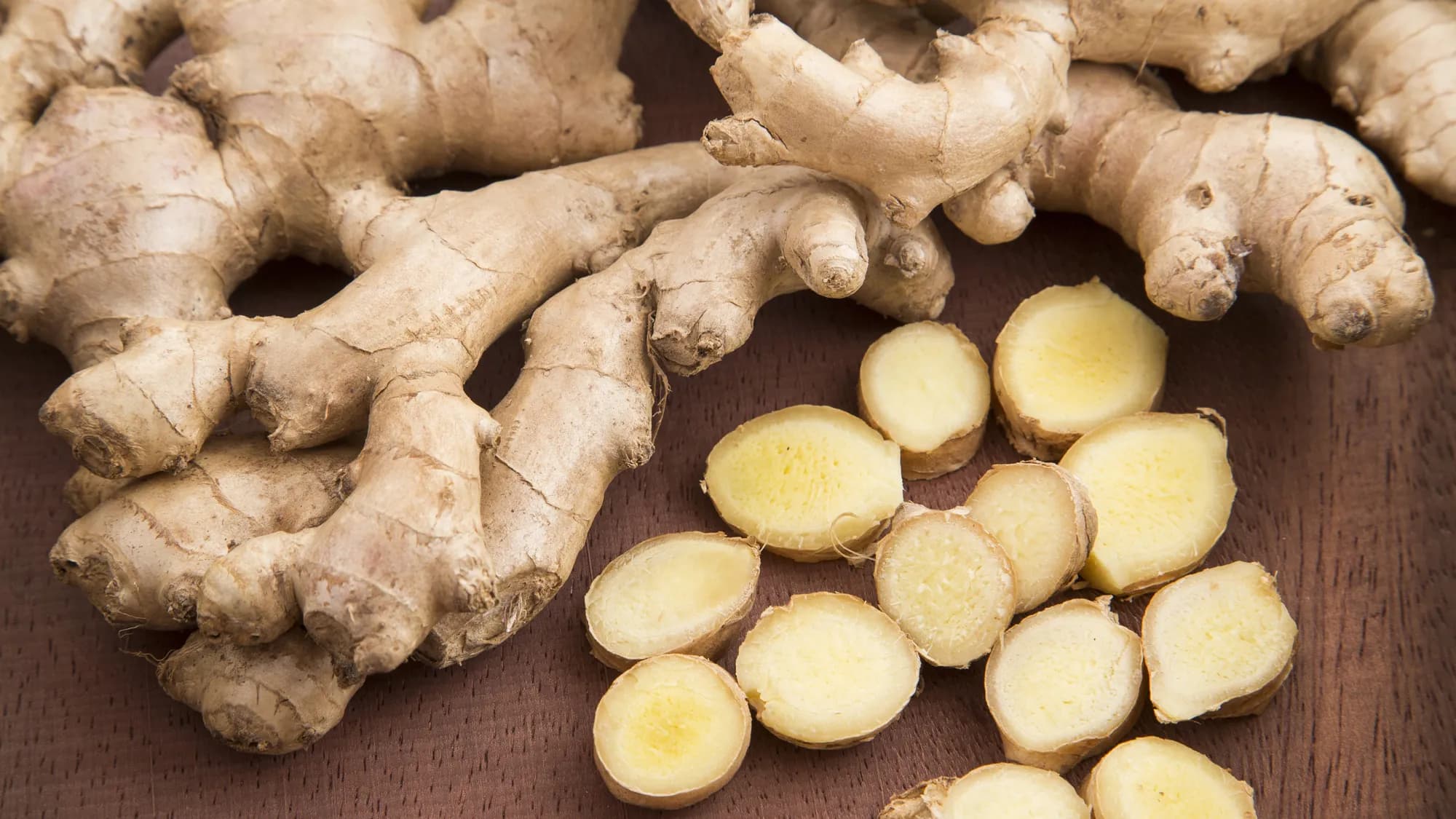
Scientific Name
Zingiber officinale
Common Names
Ginger
Plant Family
Zingiberaceae
Location
Native to Southeast Asia and widely cultivated in tropical and subtropical regions. Grows in moist, fertile soil and warm climates. Often grown from rhizome pieces.
Description
Perennial with lance-shaped leaves and thick, knotted underground rhizomes. The rhizome (commonly called "ginger root") is aromatic, pungent, and spicy when fresh or dried. Used in both food and medicine worldwide.
Uses
Warming stimulant, carminative, anti-nausea, circulatory tonic, and anti-inflammatory. Used for motion sickness, cold digestion, nausea, menstrual cramps, arthritis, and colds/flus. Enhances absorption of other herbs and supports circulation and warmth.
Energetics
Hot, drying, stimulating. Moves Qi and blood, warms cold stagnation, disperses chills.
Parts Used
Rhizome (fresh or dried)
Constituents
Volatile oils (gingerol, shogaol), resins, starch, flavonoids
Dosage
- Infusion (fresh): 1–2 tsp grated root per cup, steep 10–15 min
- Decoction: 1 tbsp sliced fresh root, simmered 10–20 min
- Tincture (1:5): 20–40 drops, 2–3x/day
Notes on Use
Ginger is a favorite for moving cold — cold digestion, cold limbs, cold uterus. Used in everything from nausea blends to pain formulas. It’s also a key circulatory herb and enhances absorption of other herbs in a formula. Fresh is more warming and dispersive; dried is hotter and more focused.
Harvesting
• Rhizome harvested after 8–10 months of growth. Can be used fresh or dried.
Contraindications
Use caution in high heat conditions or with ulcers. Avoid high doses in pregnancy unless guided.
Recipes
- Warming Tea: Ginger, cinnamon, orange peel
- Nausea Relief Tincture: Ginger, peppermint, chamomile
- Pain & Inflammation Decoction: Ginger, turmeric, licorice